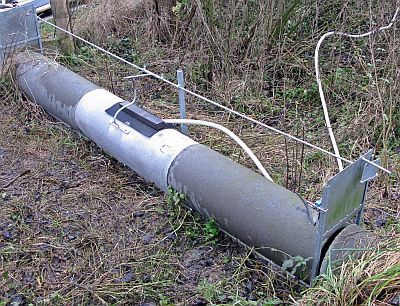![[Translate to English:] [Translate to English:] Landrover in the field](/fileadmin/_processed_/e/3/csm_Landrover_7e1b0ca2be.jpg)
| Project data | |
|---|---|
| Project leader: | Prof. Prof. h. c. Dr. Ursula Siebert |
| Project term: | October 2013 through mid-2015 |
| Sponsorship: | Deutscher Jagdverband (German Hunting Association), Berlin |

Project description
Against the backdrop of the Agreement on International Humane Trapping Standards (AIHTS) and ISO-10990, effects of live traps on predators are investigated. The effort is aimed at developing recommendations for the efficient deployment of live traps in compliance with animal welfare standards. The research is part of the predator project of MELUR Schleswig-Holstein and the hunting association (Landesjagdverband) of the State of Schleswig-Holstein in Eiderstedt, North Frisia. There, live catch traps are used on predators to reduce their impact on ground-breeding birds.
Investigations of the behavior (ethological investigations) of trapped predators and their stress levels, radiological examinations and subsequent autopsies with health status assessment will be conducted during the project. Health status of predators will also be evaluated with regard to possible pre-existing impairment.
For ethological investigations cameras will be tested for their utility in selecting traps. The behavior of predators while being caught will be recorded to observe attempts of escaping, increased activity, etc.. Camera systems will be further developed and optimised after each use, as appropriate. Ethological analyses aim to provide insights into stress levels and well-being of the predators.
After removal from the trap, the animal should be anesthesised as quickly as possible to enable clinical examination and blood collection. The animal will then be euthanised and body secretions and hair can be sampled to determine levels of several stress hormones, allowing an assessment of reactions during trapping.
Radiology investigations will be conducted before autopsy to guide dissection towards certain skeletal regions with possible lesions. The final autopsy includes a comprehensive macroscopic assessment of all organ systems as well as the central nervous system. Organ tissue will be sampled during dissection and histology performed. The pathological investigations mentioned also aim to enable an assessment of pre-existing impairment of the predator, which may have influenced its behavior or stress tolerance negatively.


